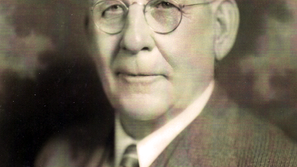Columbus Day? Why not? And, who cares?
- Jim Glynn
- Oct 8, 2016
- 4 min read
Although we recognize Monday as Columbus Day, the date that is celebrated as the European “discovery” of the Americas, it is likely that we’ll never know which European — or which human being — first set foot on either of the American continents. Furthermore, who cares? To the best of our current knowledge, here’s what the record shows. The origin
Nearly 14 billion years ago, time and space coalesced causing an event that we call the “Big Bang.” That started the creation of our universe. How that happened, why that happened, what caused that to happen are speculations that are subject to religious, metaphysical, and scientific interpretations.
Over the next 10 billion years, bits of matter formed into large spheres — some solid, some gaseous — which circled one specific focal point at various distances. We call our focal point “Sun,” and these spheres are known as planets. Smaller collections of matter have been named asteroids, meteors, and space dust, among other designations.
One of the spheres, the one called Earth, had all of the right chemistry to allow certain atoms and molecules to form complex structures called organisms. During the next few billion years, some of these organisms organized to produce creatures that could not only thrive in the seas, but also could reproduce themselves. Eventually, these organisms formed into two huge families: flora and fauna. Some fauna, for reasons that are not understood by us, migrated from the seas to live upon the land.
About 3 million years ago, some of these land animals looked very much like human beings, part of a “family” that included great apes, gorillas, orangutans, and chimpanzees. They sustained life mainly by consuming nuts, fruits, berries, and other forms of vegetation. All current evidence indicates that this collection of mammals lived in East Africa. Analyses of DNA patterns are consistent with other evidence that Africa is the ancestral home of mitochondrial Eve and Y-chromosomal Adam. Migration
For reasons that remain mysterious, some human-like creatures migrated out of Africa at least three times. Human artifacts have been found north of New Delhi that date back at least 2.6 million years; human tools that are 2.48 million years old were discovered in a Chinese cave; and other evidence in Dmanisi, Georgia, goes back 1.85 million years.
In “Sapiens: A Brief History of Humankind,” Yuval Noah Harari states that about 70,000 years ago human beings began an extended period of migration into the Middle East, Asia, and Europe, replacing all other humanlike beings as they dominated the new lands. He seems to attribute the domination of Homo Sapiens to something that he calls the “Cognitive Revolution,” genetic changes in the wiring of the brain that enabled human beings to think and communicate in unprecedented ways.
Other researchers believe that modern thought patterns evolved over a much longer period of time, perhaps 2 million years. They point out that brain size increased and decreased at various points in the human record, probably because of the type of nutrition that our ancestors experienced. During the “Agricultural Revolution,” for example, when people subsisted mainly on grains, brains shrank a bit. Then, as people became more omnivorous, consuming more animal protein, brains expanded again. Tree of Knowledge
Regardless of which — if any — of the theories is eventually proved, it was the structural approach to language communication that was the important element in the dissemination of knowledge. As human beings stumbled into new lands with previously unexperienced climates, vegetation, and animals, those people who discovered the means of survival had to communicate their discoveries to others, or the migrants would have died out.
It is indisputable that some people thrive in the tropics where fruit is abundant and the temperature is always hot, while others have carved an existence out of icy polar regions that are largely devoid of vegetation. Only by sharing information can a people survive and repopulate a wide variety of environments. So, human populations spread over the African, European, and Asian continents.
Harari claims that the period from 70,000 years ago to 30,000 years ago witnessed the invention of oil lamps (needed for light), bows and arrows (necessary for hunting animal protein), and needles (essential for sewing warm clothing). During that period, boats were also developed, allowing people to migrate from Asia to Australia, about 45,000 years ago. Then, about 17,000 tears ago, sheets of ice formed between Asia and the part of North America that is now known as Alaska. Nomadic hunters from Siberia followed game herds across the bridge and gradually spread south. These prehistoric hunters were probably the first settlers of the Americas. Other Americans?
The idea that Siberians were the ancestors of all aboriginal Americans is not unchallenged. In “Who Discovered America?” Gavin Menzies speculates that Chinese sailors crossed the Pacific Ocean about 40,000 years ago in primitive boats that simply followed the ocean currents. This part of his story is very hard to swallow. But, most of his treatise involves Admiral Zheng He, who left China, sailed south of Africa, and made landfall on the shore of South America in 1421, a little more than seven decades before the voyage of Columbus. After forming settlements in the part of the continent that is now Argentina, he rounded the southern tip of the Americas, finally landing in Peru, where he supposedly left at least three permanent settlements.
Many European documents show that Vikings, led by Leif Ericson, came to the New World 500 years before Columbus or Zheng. In 999, he set sail for Greenland, but his ships were blown off course, and he was able to spot land to the west. A couple of years later, he decided to visit the unknown territory and eventually set foot on Vinland, now known as Newfoundland. Knowledge of Vinland spread around medieval Europe, and there is conjecture that Columbus sailed to Iceland in 1477 where he may have obtained a map of the New World.
Columbus, according to most historical accounts, believed that the land to the west was the east coast of India, and it was cartographer Amerigo Vespucci who figured out that Brazil and the West Indies were not outskirts of Asia, but an entirely new land mass. So, the attribution of discovery of the New World seems to be somewhat arbitrary, but the naming of it is certainly appropriate. Happy Amerigo Day!
• • •
Jim Glynn can be contacted at j_glynn@att.net.


























Comments